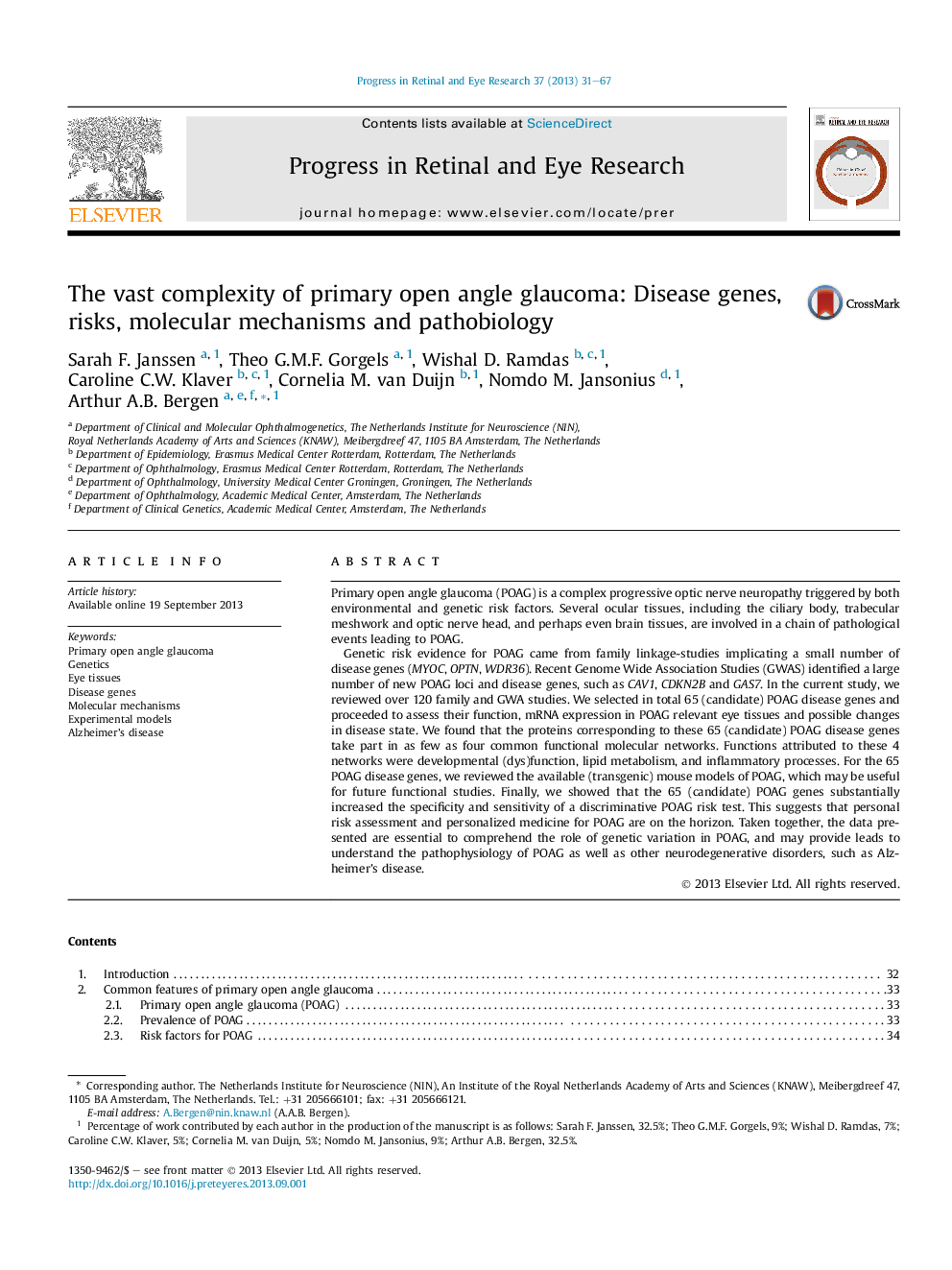| کد مقاله | کد نشریه | سال انتشار | مقاله انگلیسی | نسخه تمام متن |
|---|---|---|---|---|
| 6202737 | 1602829 | 2013 | 37 صفحه PDF | دانلود رایگان |
- We reviewed the pathobiology of POAG.
- We reviewed 70 genetic POAG loci and selected 65 candidate POAG disease genes.
- Candidate POAG genes are often highly expressed in several POAG-involved tissue.
- The 65 candidate POAG genes were functionally annotated in 4 molecular networks.
- The 65 candidate POAG genes yield a very high discriminative risk testing ability.
Primary open angle glaucoma (POAG) is a complex progressive optic nerve neuropathy triggered by both environmental and genetic risk factors. Several ocular tissues, including the ciliary body, trabecular meshwork and optic nerve head, and perhaps even brain tissues, are involved in a chain of pathological events leading to POAG.Genetic risk evidence for POAG came from family linkage-studies implicating a small number of disease genes (MYOC, OPTN, WDR36). Recent Genome Wide Association Studies (GWAS) identified a large number of new POAG loci and disease genes, such as CAV1, CDKN2B and GAS7. In the current study, we reviewed over 120 family and GWA studies. We selected in total 65 (candidate) POAG disease genes and proceeded to assess their function, mRNA expression in POAG relevant eye tissues and possible changes in disease state. We found that the proteins corresponding to these 65 (candidate) POAG disease genes take part in as few as four common functional molecular networks. Functions attributed to these 4 networks were developmental (dys)function, lipid metabolism, and inflammatory processes. For the 65 POAG disease genes, we reviewed the available (transgenic) mouse models of POAG, which may be useful for future functional studies. Finally, we showed that the 65 (candidate) POAG genes substantially increased the specificity and sensitivity of a discriminative POAG risk test. This suggests that personal risk assessment and personalized medicine for POAG are on the horizon. Taken together, the data presented are essential to comprehend the role of genetic variation in POAG, and may provide leads to understand the pathophysiology of POAG as well as other neurodegenerative disorders, such as Alzheimer's disease.
Journal: Progress in Retinal and Eye Research - Volume 37, November 2013, Pages 31-67
